
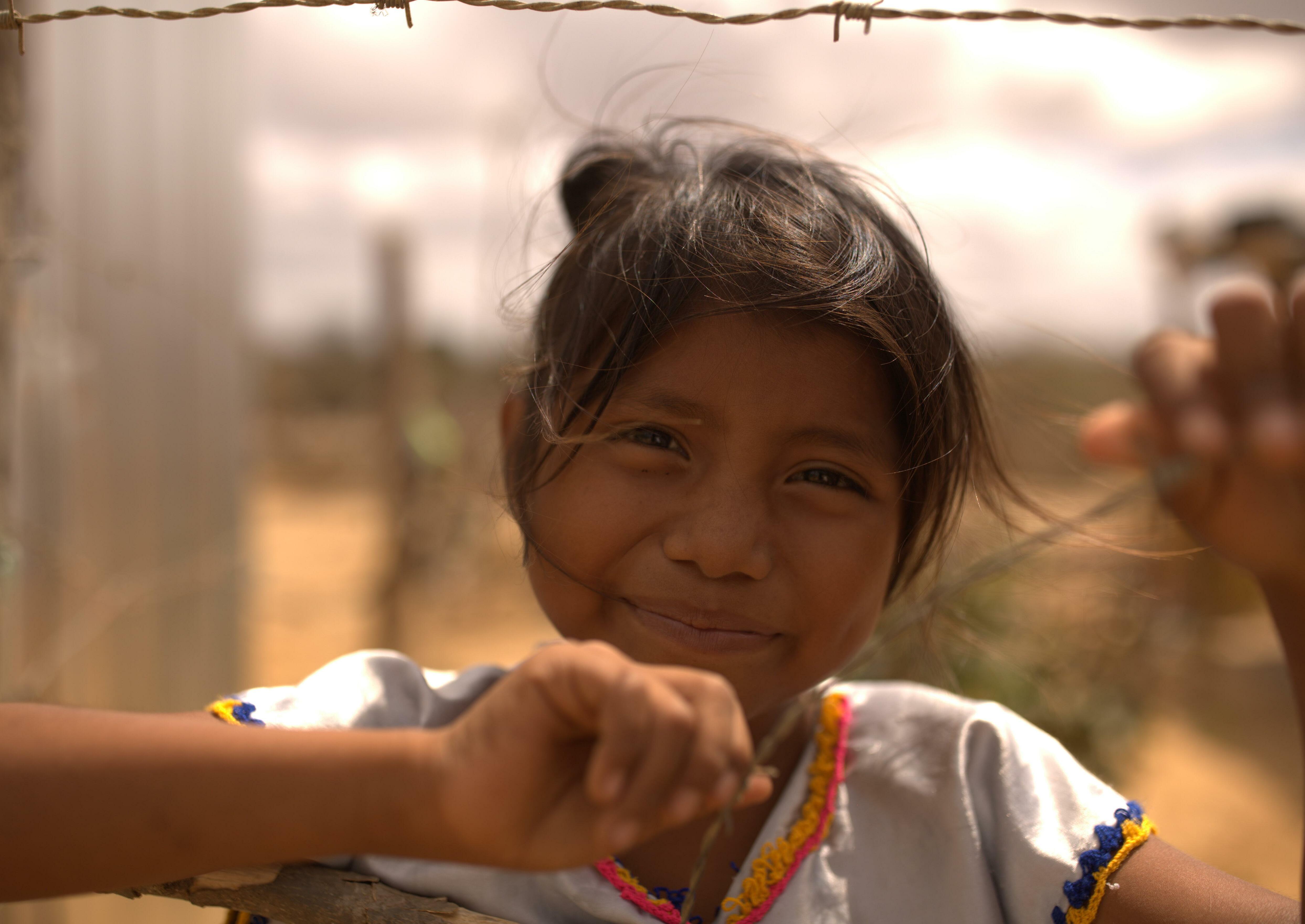



We are proud to present to you our strategic plan 2023-2026 ‘Towards peace and resilience’. The priorities mentioned in this plan have come together following an extensive consultation process both within the organisation as well as with other stakeholders. With the focus on peace nexus, localisation and climate resilience we have set ourselves an ambitious agenda. But it is an agenda that we strongly believe in, which is why we made these our priorities.
At the same time we know that the future is very uncertain. In an increasingly volatile world and with ever increasing needs, we continually need to adapt our approaches as we seek to maximise impact with limited resources. This plan is meant to give clear guidance to that constant process of adaptation.
In all this we want to keep our focus on reaching out to those in need.
Driven by our Christian values and ethos we place people at the centre, acknowledging that we have all been made in God’s image. We want to work with people rather than work for them, thus promoting human dignity and self-reliance as we work towards our vision of seeing people having hope and living dignified lives in peaceful communities.
Chris Lukkien (CEO) Edwin Visser (CPO)Executive summary
Who we are and what we stand for History Identity Context Need
Institutional donors Working with partners ZOA constituency Internal organisation Programme strategy Our core programmatic themes The sectors we work in Our dual mandate: Relief and Recovery
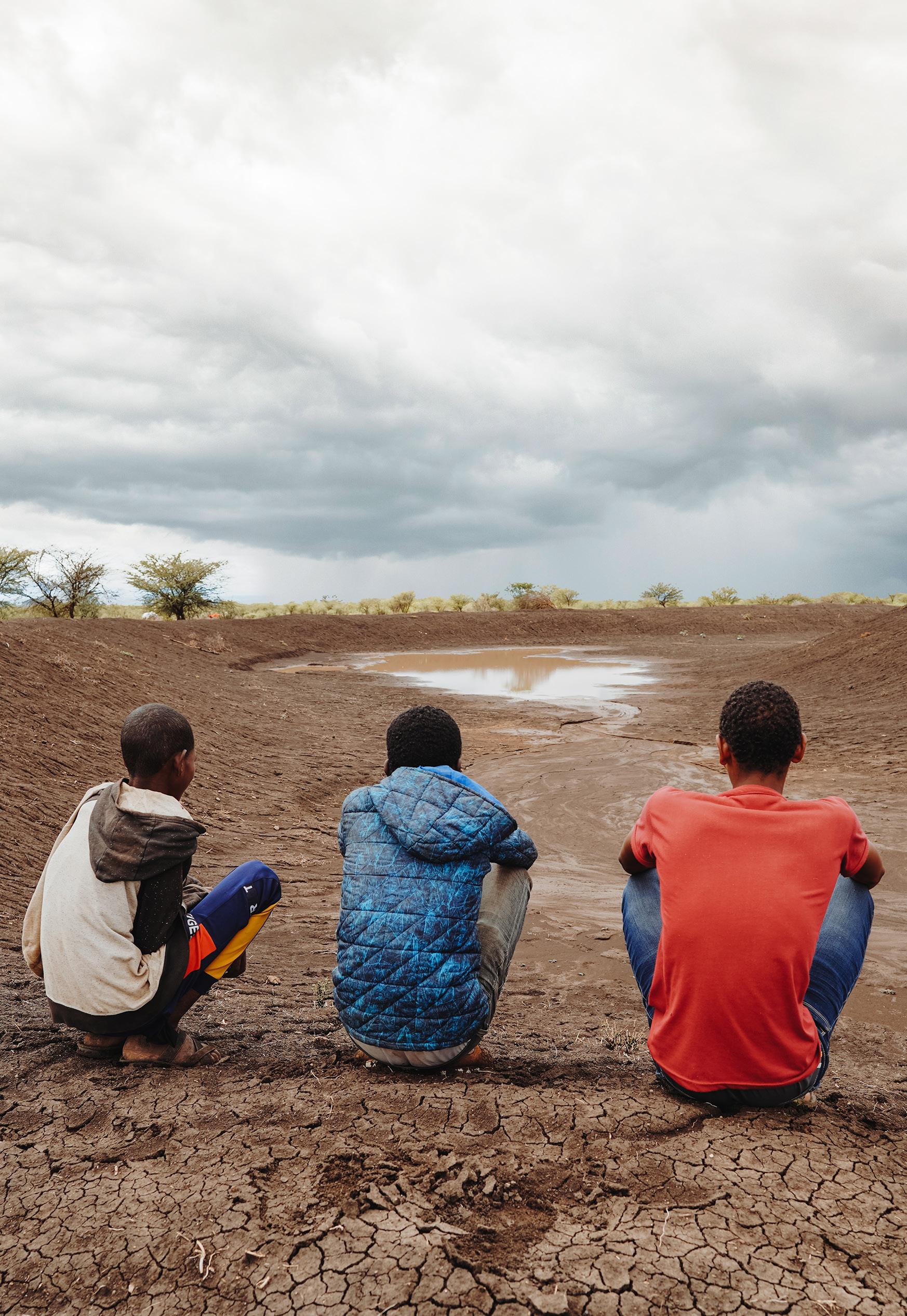
Preconditions
HRM –Putting people first Working in consortia
Developing the connection with our Dutch constituency Enhanced use of our current systems
Keeping track of implementation
As humanitarian needs and crises are on the rise, ZOA’s work is needed more than ever. Inspired by its Christian identity, ZOA stands with people affected by conflict or natural disaster and supports them in regaining hope and becoming more resilient in coping with crises. This strategic plan explains the choices ZOA has made in responding to humanitarian crises and highlights the organisation’s strategic priorities for the 2023-2026 period.
experience and expertise over many years: Food Security & Livelihoods, Water, Sanitation & Hygiene, Education, Shelter and Peacebuilding, including land rights.
The context of humanitarian crisis is often characterised by a combination of fragility, conflict and natural disaster. In accordance with that, ZOA has chosen to bring more focus in its programmes along the lines of three interrelated programmatic themes: Peace Nexus, Localisation and Climate Resilience. In all we do, we will be searching for options to contribute to reducing conflict and promoting peace. We will support support communities to adapt and become more resilient to the impacts of climate change. We aim at working towards stronger local capacities, leadership and ownership. Besides focusing on these programmatic themes, ZOA has chosen to also give specific attention to Gender, Diversity and Inclusion in our programmes, as we want to support and engage with all people, no matter what their background is.
To be successful in realising the programmatic priorities set in this plan, ZOA will focus on strengthening and developing some specific aspects of the organisation and how it operates. First, we will give more priority to working in consortia with international and local partner organisations. This will help us making better use of the complementary strengths of local and international organisations and in responding to donors’ preference for large funding contracts. Secondly, we want to put people first by further strengthening our focus on the human side of our work and organisation. Thirdly, we will further develop the connection with our Dutch constituency, because they are core enablers of ZOA’s work . Finally we will invest in making optimal use of the current digital systems that were developed and introduced over the past few years, to let our work become more efficient and to support learning and accountability.
Peace Nexus Localisation Climate Resilience Cross-cutting theme
Gender, Diversity and Inclusion
Putting people first Working in consortia Connection with Dutch constituency
Enhanced use of current systems
ZOA will realise this programmatic focus while maintaining its dual mandate of relief and recovery. And ZOA will continue its focus on the sectors where it has gained
Throughout these themes, ZOA will continue to provide evidence of its pledge for accountability to its key stakeholders, as is reflected by its strong commitment to the Core Humanitarian Standard (CHS). Similarly, ZOA will continue to feed a culture of transparency and integrity and will further develop the effective implementation of its Integrity Framework.
Rooted in our history, ZOA’s identity is an important motivation for what we do and how we work. The mission, vision and values of the organisation provide direction and stimulate connection among all involved.
Inspired by our Christian faith Mission we provide relief and recovery to people impacted by conflicts and disasters Vision as we envision a world where people have hope and live dignified lives in peaceful communities Values
We value people We are faithful We are good stewards We serve with integrity

2. Who we are and what we stand for
ZOA was founded in 1973 in response to a humanitarian crisis in Southeast Asia. Since then, ZOA has grown from a small organisation with a regional focus to an international organisation that runs high quality, integrated programmes for people affected by conflict or natural disaster in several countries in Asia, Africa, the Middle East and South America. In addition to receiving private support and funding from the Netherlands, ZOA has become a trusted partner for an increasing number of institutional donors and partners around the world. The three students who envisioned, created and initially operated ZOA out of a small room in an attic likely did not imagine a future where the organisation would employ nearly a thousand people worldwide. While ZOA has expanded its reach considerably, we are steadfast in our commitment to bring real, tangible and sustainable change to people affected by conflict and disaster.
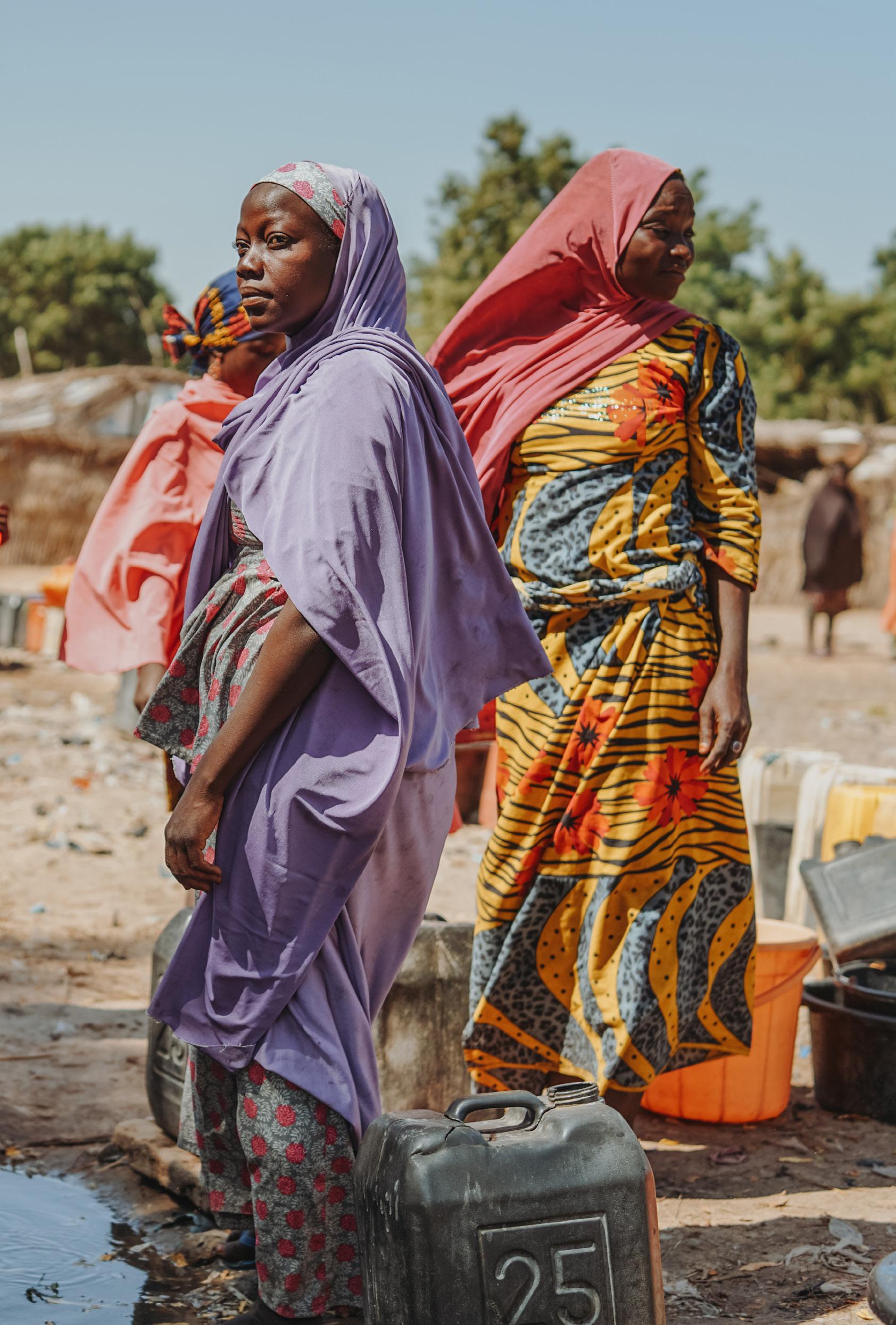
The identity of the organisation encompasses: our sense of calling which outlines our deepest motivation and inspiration our mission which articulates what we essentially do and for what purpose our vision which pictures our dreams and aspirations for the people we serve our values which drive organisational culture and inform staff behaviour
ZOA’s Christian identity has always been our source of inspiration and motivation. The sense of calling that moved the early founders into action still lies at the heart of the organisation today. We believe in the biblical message of reconciliation and restoration for a broken world. We are convinced that we have a specific responsibility to stand with people in vulnerable positions and support them in regaining hope. Inspired by our Christian faith, we reach out to people in need, irrespective of their ethnicity, gender, religion, age or any other distinctive feature. It motivates us to let our work be guided by the humanitarian principles: humanity, neutrality, impartiality and independence. Based on that same inspiration, we value all people equally. We empower them to advocate for their rights and meet their needs while following an inclusive approach.
We contribute to relief and recovery together with people affected by armed conflict or natural disaster. The context in which we operate is often characterised by a combination of state fragility, conflict and climate-related disaster. We strive to be in areas where our added value in addressing these factors is greatest and seek to reach out to the most vulnerable. We help them rebuild their livelihoods and become more resilient in coping with shocks and threats. Our dual mandate includes relief and recovery. In both we seek to collaborate with local organisations as often as possible, acknowledging local ownership and supporting local capacity. Once the context becomes more stable and programmes become more development-oriented by nature, ZOA will phase out and shift its attention to other crises.
We envision a world where people have hope and live dignified lives in peaceful communities. Longing for true and lasting peace is part of our faith, but we also believe that God calls us today to contribute to peace, reconciliation and hope in a broken world.
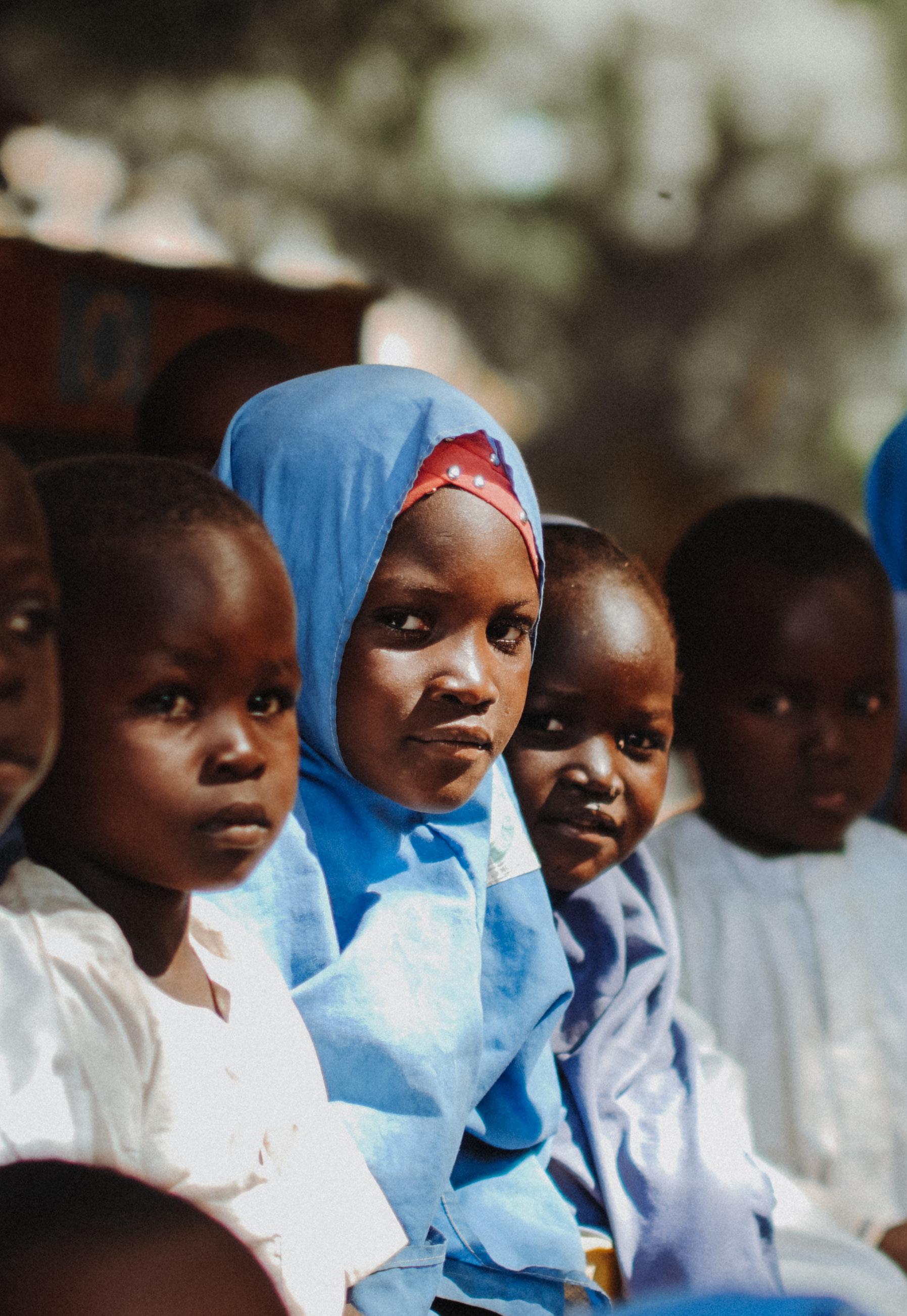
ZOA seeks to ensure that its values drive the organisational culture and bring greater consistency in the way programmes and activities are implemented. In that sense, the values reflect the core behaviour we expect from our staff.
All people are made in God’s image and we therefore place people at the centre of our work. We treat people with respect and dignity, irrespective of ethnicity, gender, religion, age or any other distinctive feature. We stand with people, acknowledge their potential and support them in their search for living dignified and peaceful lives and in regaining hope for the future.
We want to bring lasting change and are committed to staying when the initial crisis is over. Even when local circumstances are challenging, we seek to reach out to the most vulnerable. We recognise the role and capacity of local actors and seek to collaborate with them. Being aware of our temporary role and presence, we are committed to investing in strengthening local civil society.

We utilise the resources entrusted to us in the best possible and most responsible way.
We are efficient, effective, transparent and accountable to those we support and those who support us. We are committed to contributing to environmental sustainability and we encourage the people we serve to do the same.
We hold ourselves to the highest standards of personal and organisational integrity. We are open and honest in the way we deal and communicate with our stakeholders. We treat people with respect and speak the truth in love to one another.
ZOA operates in a volatile and complex environment with humanitarian needs ever increasing. Analysis of that external environment and lessons learned about our own organisation have informed us in making the strategic choices outlined in this plan.

Humanitarian needs continue to be overwhelming and have further increased during the past few years. Global forced displacement exceeded 84 million by mid-20211, a sharp increase from 68.5 million in 2017. The most recent figures, including the effects of the Ukraine crisis, indicate that the number of people forced to flee has crossed the 100 million line for the first time ever2. In 2022, an estimated 274 million people are in need of humanitarian assistance and protection3, which is almost 50 million more than the numbers reported in 2019. Based on the sad reality reflected by these trends and figures, there is no realistic prospect of humanitarian need reducing in the near future.
An increasing number of humanitarian crises develops into a state of so-called ‘protracted crisis.’
The COVID-19 pandemic and the global impact of the Ukraine crisis have added further dimensions to these complex situations of protracted crises, which has made humanitarian needs rise even further and makes addressing protracted crises even more challenging.
coping capacity and collaboration mechanisms to effectively deal with risks and shocks, which causes vulnerability, especially among the poorest populations4. Fragile states now account for two-thirds of the world’s people experiencing extreme poverty.
Secondly, armed conflict is often a major driver of humanitarian need and displacement. By mid-2021, due to conflict and violence, the number of internally displaced persons (IDPs) had risen to nearly 50.9 million5. In most of the humanitarian crises in countries like DR Congo, Yemen, Sudan, Syria and South Sudan, complex armed conflict is a major cause of the protracted humanitarian crisis. The resurgence of violent conflicts, particularly in low- and middleincome countries, has been higher than ever, which has challenged the assumption that economic growth alone leads to greater peace and stability. The Ukraine crisis illustrates that even in Europe smouldering interstate tension can escalate, resulting in armed conflict, massive displacement and the return of the cold-war sentiment.
The context of a humanitarian crisis is complex and often characterised by a combination of fragility, conflict and natural disaster. Firstly, in fragile countries, governments and communities show insufficient
1 UNHCR 2021 mid-year trends
2 UNHCR 2022
3 Global Humanitarian Overview 2022, OCHA
Finally, climate change is increasingly seen as a ‘risk multiplier,’ contributing to more frequent and intense climate-related natural disasters, but also fuelling conflict and driving displacement6. Climate change is among the direct contributing factors of natural resource scarcity and food insecurity, thus causing displacement.

4 States of Fragility 2020, OECD
5 UNHCR 2021 mid-year trends
6 Global Humanitarian Overview 2022, OCHA
Moreover, scarcity of natural resources, such as water and land, can in turn contribute to competition for resources and increase the risk of violent conflict7
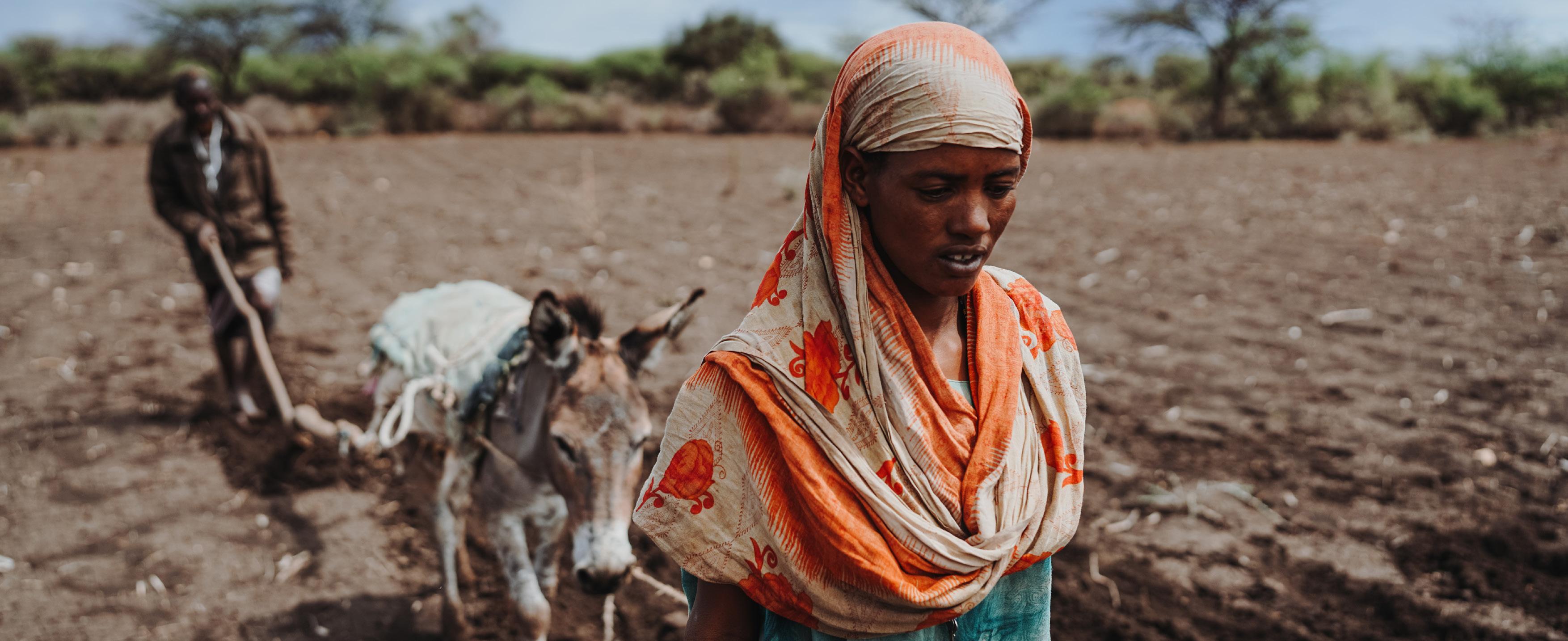
In several countries, humanitarian access is limited due to insecurity, restrictions by authorities and counterterrorism regulations, often combined with recurring environmental constraints, like floods and poor infrastructure. Moreover, violence against humanitarian workers and assets continues, especially in conflict-affected countries, with regular reports of humanitarian workers being killed. In most of the countries where ZOA has been working, these constraints were reported to be very significant8
7 The humanitarian impact of combined conflict, climate and environmental risks, ODI, 2020
8 Humanitarian Access Overview, July 2021, ACAPS
9 Localisation, racism and decolonisation: Hollow talk or real look in the mirror? OCHA – IASC, 2021
Recent anti-racism protests across the globe have challenged us to consider our own blind spots in how we relate to local and national organisations and stakeholders in our efforts to address humanitarian need. As a result, the call to ‘decolonise aid’ is getting louder. It underscores the importance to let decisionmaking be in the hands of the people directly impacted by aid and development programmes9.These should be leading principles in our efforts to optimally align with local capacity, support local leadership and stimulate communities to be the ‘drivers of change.’ These principles also underline the need to address fragility as one of the key drivers of humanitarian need.
Governments and multilateral organisations continue to provide the majority of external funding for relief and recovery responses. ZOA is recognised as a trustworthy implementing partner and receives a large percentage of its funding from such donors, either directly or through consortia. Humanitarian needs continue to increase while the availability of institutional funding lags behind, which puts pressure on organisations such as ZOA to get their programmes sufficiently funded. The standards and preconditions set by donors in terms of efficiency, administrative requirements and accountability are becoming more and more demanding. At the same time, interventions need to be designed and implemented so that they can be scaled up to reach larger numbers of people. All this makes institutional donors increasingly look for bigger implementing partners that are able, either on their own or together with other organisations in a consortium, to implement large-scale projects. Most institutional donors actively pursue the ‘localisation agenda.’ As an organisation with a local presence and good knowledge of the local context, ZOA can play a meaningful intermediary role by supporting local organisations in their developmental process, including connecting them with institutional donors. Further, ZOA is in the unique position to share local perspectives with donors and advocate for policies that better align
with local realities. For this to work, a different way of sharing risks among all stakeholders is needed for successful collaboration among local organisations, international NGOs like ZOA and institutional donors.
In accordance with our values, ZOA strongly believes in the importance of empowering people and the organisations that represent them.
As fragility is one of the key drivers of humanitarian need, we believe addressing imbalanced power relations and encouraging participation, inclusion and constructive collaboration of key stakeholders are important contributors to durable change. ZOA therefore actively seeks collaboration with local organisations that take a legitimate position and role in representing people affected by conflict or natural disaster and in improving their situation.
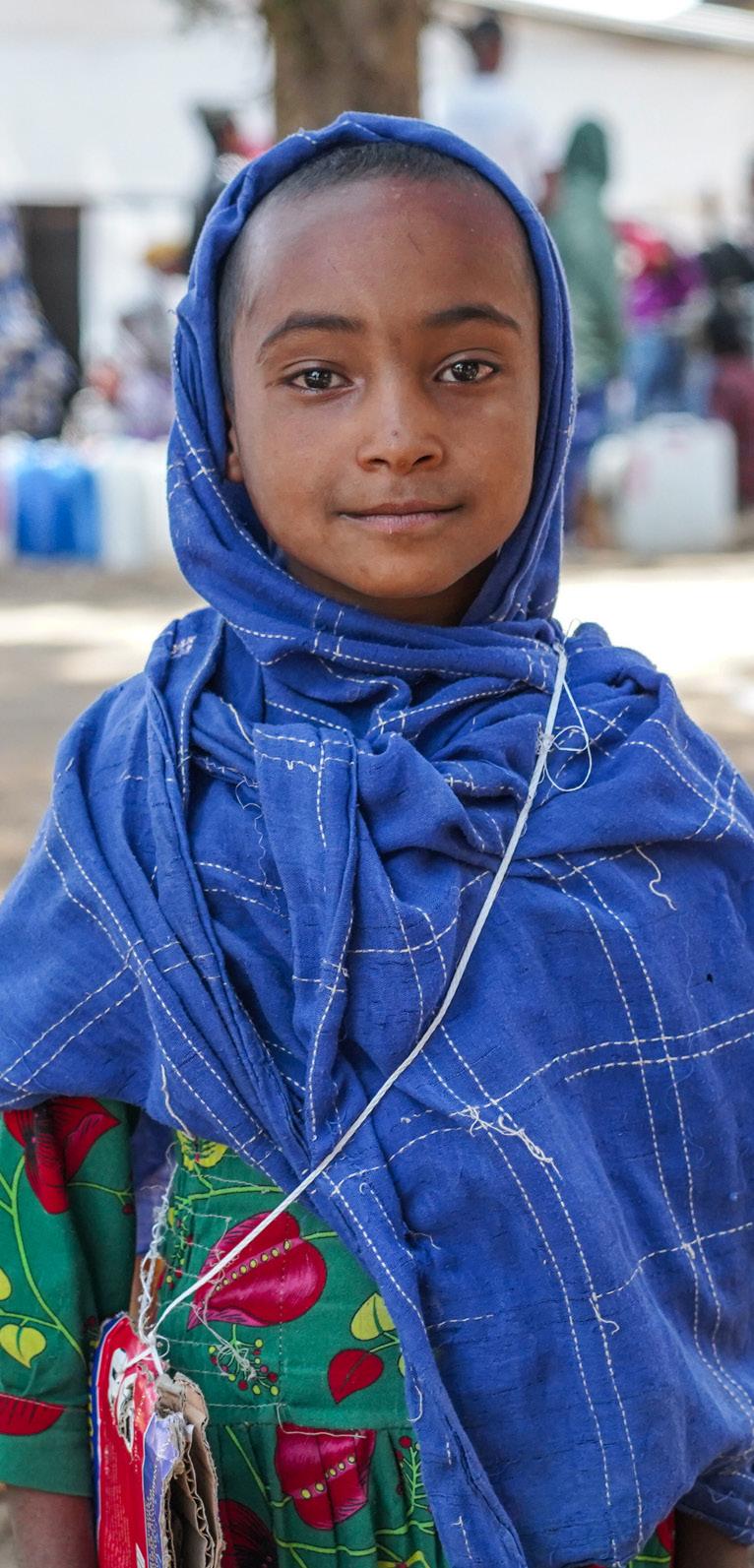
The above aligns with trends in the humanitarian sector, where the localisation agenda has gained significant momentum during the past few years.
Working as much as possible through local partner organisations and strengthening local civil society and other local actors have become important leading assumptions in humanitarian work.
Initiatives like the Grand Bargain, of which ZOA is a signatory, also emphasise the importance of working through local partner organisations.
At an operational level, in accordance with changing donor preferences, there has been a trend of organisations joining forces in consortia, in order to be able to implement large-scale projects covering multiple locations, sectors and areas of expertise. In this manner, cooperation has gradually become the standard rather than the exception in our sector. During the past few years, ZOA has gained valuable experience as a lead agency in a number of consortia of significant volume and complexity.

ZOA has been able to maintain a strong connection with its Dutch constituency, resulting in an ongoing legitimisation of ZOA as a Dutch civil society organisation and a solid funding base from private funding sources. The Christian identity of the organisation is an important factor for involvement and support. Most of ZOA’s supporters are members of an active local church. The connection with our constituency is an important basis for promoting awareness in the Netherlands about the situations in countries affected by conflict and disaster and the underlying dynamics. It also contributes to legitimacy for lobby and advocacy, as ZOA represents both our constituency in the Netherlands and people and organisations in the countries where we work.
In the Netherlands, the total amount of private donations to charities has increased over the past few years, although it has remained stable in terms of the percentage of gross domestic product (0.8%)10. An increasing percentage of people prefer to give occasional donations rather than on a regular basis, and to changing charities. At the same time, opportunities for some kind of experience and involvement with the work of an organisation are becoming increasingly decisive for supporting that organisation. Donating by companies, as part of their corporate social responsibility (CSR), continues to grow in the Netherlands and has become increasingly important for ZOA as well.
Likewise, the share of income from major donors, trusts and foundations has increased, which is consistent with the general trends in the charity sector. Legacy income for charities is also expected to increase in the years to come and ZOA has invested in this. Although ZOA’s recent investments in this are beginning to reflect in increasing legacy income, there is still more potential.
ZOA has a solid organisation with good administrative policies and procedures and a flat organisational structure. This contributes to ZOA being able to account well for its operational activities and ZOA is generally known as a reliable partner that is able to deliver. Our flat organisational structure means that decision-making is happening close to where projects are implemented.
In the past few years, ZOA has invested considerably in reviewing and updating several of its policies and procedures and in replacing some of its systems, such as the Project Management system and the ERP system. A recent evaluation has helped to identify areas of further improvement in the use of these systems as a basis for further development of risk-monitoring, accountability and organisational learning.
ZOA’s main asset is formed by its highly committed staff, both at country and HQ level, with many prepared to go the extra mile despite challenging contexts and high workloads. Shared values, inspired by ZOA’s faith-based identity, function as a uniting factor and contribute to a strong work ethic.

In a complex environment where multifaceted crises have increasingly become protracted, there are no easy solutions or ‘quick fixes.’ ZOA contributes to relief and recovery in 5 sectors, following an integrated approach based on three core programmatic themes. Thus, we make a focused contribution to the realisation of our vision.

In programming, ZOA focuses on three core programmatic themes that are leading in all our work: Peace Nexus
Climate Resilience Localisation
In the first place, the choice for these core programmatic themes reflects the main drivers of humanitarian crisis: fragility, conflict and climate-related disaster. Although we realise that working on these themes will never eradicate these drivers of crisis completely, we are convinced that significant contributions can be made to reducing their effects and to strengthening people’s coping capacity to deal with them.
making limit durable change and are important contributing factors to conflict. These are all aspects related to ‘localisation.’ Climate-related patterns of droughts and floods and scarcity of water and land often feed conflict. At the same time, conflict may contribute to poor harvests and make the scarcity of resources even worse. Thus, strengthening climate resilience can have a positive impact on promoting peace and vice versa.
Thirdly, ZOA aims at developing a clearer and more specific programmatic profile. We believe that with this combination of interrelated themes, we will bring more focus to our programmes across countries.
Secondly, several interrelations exist among these core themes. Exclusion of population groups and lack of legitimacy, participation and involvement in decision-
Peace Nexus is part of the Triple Nexus approach that focuses on the interlinkages between humanitarian, development and peace actions and actors. ZOA has always emphasised the importance of linking relief and recovery and will continue to do so.
Relief & RecoveryPeople have hope and live dignified lives in peaceful communitiesLocalisation Peace Nexus Climate Resilience Food Security and Livelihoods (FSL)
Although peacebuilding has been one of ZOA’s sectors of intervention for several years and conflict sensitivity an important cross-cutting theme, we now take the next step by making ‘Peace Nexus’ one of our core programmatic themes. Consequently, we will emphasise in our analysis, programming and monitoring & evaluation, the way our interventions contribute to conflict reduction and peacebuilding. We will approach all our sectoral interventions through a peacebuilding lens by answering the question of how our work can optimally contribute to reducing and preventing conflict and promoting peace. In this context, peace is not the absence of active violence (‘negative peace’) but entails social cohesion, mutual acceptance, gender equality and opportunities for socioeconomic development (‘positive peace’).
to peace through its sectoral work. Working in different sectors, often bringing tangible results, is regarded as an effective entry point for peacebuilding, as it will help to gain trust and legitimacy from the population and the government. Thus, it is crucial for effectively addressing resource-based conflicts, e.g. related to access to water or land.
Options for making such contributions will differ per situation. Especially in relief, implementing peace nexus as part of ZOA’s Triple Nexus approach can be challenging in situations that are sensitive, such as open conflicts or limited access. Relief focuses on life-saving assistance and aims to be in accordance with the humanitarian principles of humanity, neutrality, impartiality and independence. However, even if options are limited in a specific context, we will still use our peace nexus lens in order to operate in a conflict-sensitive way and at least prevent doing harm.
ZOA’s second core programmatic theme, Climate Resilience, is about communities adapting and becoming more resilient to the impacts of climate change and environmental crisis. Approaches like Disaster Risk Reduction will help communities to mitigate the risks of climate-related disasters such as floods and droughts. Climate resilience is also about strengthening livelihoods in a way that protects the environment. Guided by local leadership and expertise, ZOA will work with communities and use available (local) knowledge and resources to adapt to climate change. At the same time, in accordance with our core value of ‘good stewardship’, ZOA will review its own operations in order to find ways of limiting our environmental footprint as an organisation.
The above means that ZOA will not become a single sector peacebuilding organisation, but rather a ‘peace nexus organisation’ with an integrated approach, deliberately searching for options to make effective contributions
By their nature, sectors like Food Security & Livelihoods and WASH will often provide good opportunities to contribute to this. However, ZOA will apply this second core programmatic theme in all its sectoral work. Similar to ‘Peace Nexus,’ we will approach all our sectoral interventions through a climate-resilience lens by identifying linkages between sectoral interventions and climate resilience. In doing so, key questions to be addressed are:
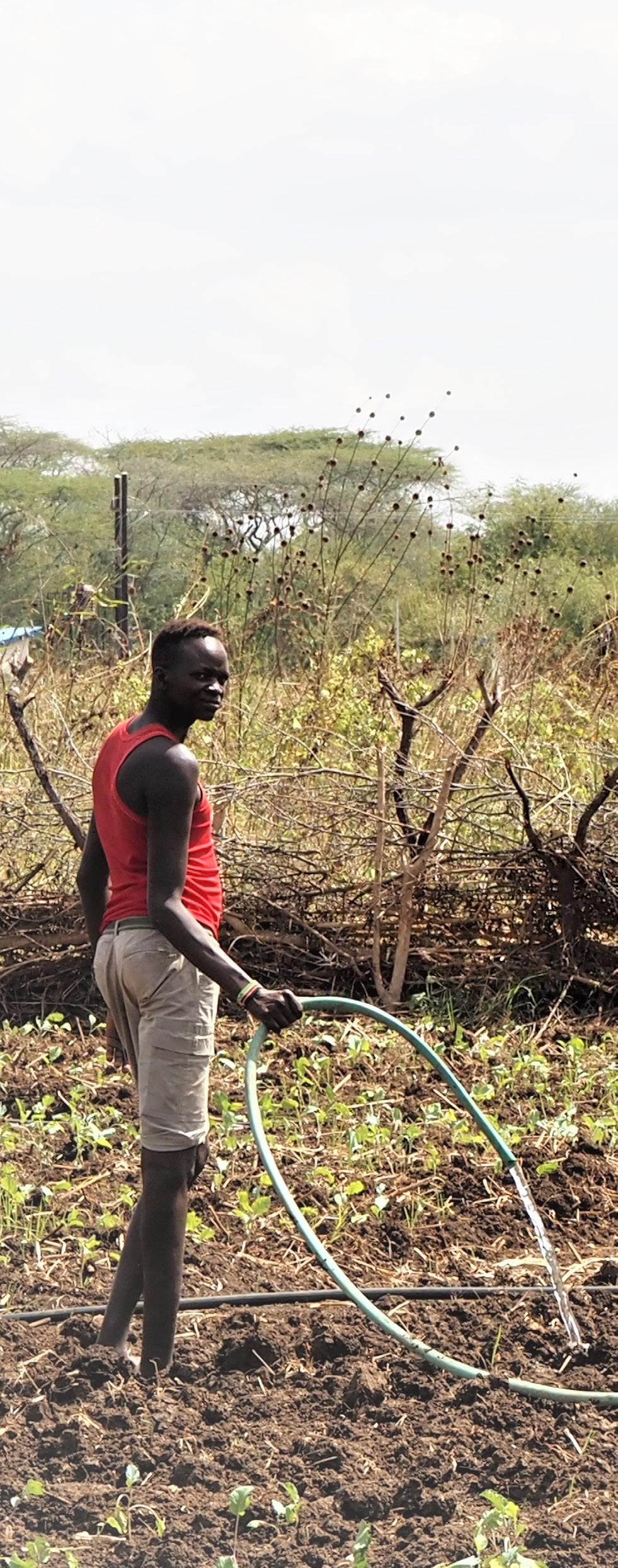
How do we optimally accommodate mechanisms for coping with climate change in sector interventions? How do we design sector interventions in a way that protects the environment, limits our environmental footprint as an organisation, and promotes positive change? What combination of sector interventions optimally contributes to climate resilience?
ZOA has been following a hybrid model of operation for many years, whereby direct implementation is combined with working with and through (local) partners, depending on the specific situation and context.
ZOA now takes the next step by adopting a transformative approach to localisation. This goes beyond just involving local organisations in the planning and implementation of projects and programmes. We aim at working towards stronger local capacities, leadership and ownership. Especially in fragile states, a strong civil society, able to voice its needs and priorities and stand up for minority groups, is an important precondition for sustainable change. Local civil society should be the owner of change, in close collaboration with relevant government bodies and other actors. That will make change more effective and lasting, as it feeds the legitimacy and capacity of the people affected by crisis.
To make this practical, ZOA will constantly seek options to make optimal use of local capacity and to integrate capacity enhancement of local civil society and other relevant actors in our programmes. Moreover, options for strengthening community participation and decision-making will be pursued in all stages of programming.
The core programmatic themes are at the basis of our theory of change. A summarized version is presented below. A detailed version will be worked out separately, which will also more specifically address how the various sectors are linked to the core programmatic themes. If communities and the organisations representing them use their capacities effectively, have ownership in decision-making and interact effectively with local government actors, and communities have adopted strategies for dealing with the effects of climate change, and communities have adopted strategies for preventing conflict and promoting peace then communities will have hope and better perspectives for living dignified lives in peaceful communities because the main drivers for humanitarian crisis have been effectively reduced and communities have become more resilient and capable of coping with the impact of humanitarian crisis.
----
ZOA’s focus is at the community and regional (within country) level, although we realise that conflict and climate change have causes and dimensions that go beyond that level. The assumption is made that some positive change can still be attained at the community / regional level and that this will not be invalidated by a significant deterioration of the context at a higher level.
Regarding our focus on localisation, which covers aspects like inclusion and participation of minorities, a reasonable ‘space’ for strengthening civil society is assumed, as well as the presence of local partner organisations that have a mission and values that sufficiently align with ZOA’s.
Where needed, in the event local implementation capacity is limited, ZOA will still make use of its own local presence and capacity for the implementation of projects. In each ZOA programme, this will require a continuous process of determining ZOA’s role and focus, which can vary from intermediary and facilitator of strengthening capacity to implementer. It also involves balancing our role in managing donor contracts, including responsibility for donor compliance, and maintaining equal and open relations with partners based on mutual trust.
These three core programmatic themes comprise the heart of ZOA’s programmatic framework, which guides and informs us in our analysis, programming and monitoring, evaluation, accountability and learning (MEAL). Thus, it ensures a coherent and integrated approach throughout the programme cycle.
For context analysis and baseline assessments, the tools used will be aligned with each of the three core programmatic themes as well as with all five sectors ZOA is involved in (see 4.2) in order to collect relevant information about programmatic risks, options and baseline situations in each of the three areas. Depending on the type of intervention (relief, recovery) and the sector involved, this may be concise or more extensive. Essentially, all three themes are considered in every intervention.
In programming, the framework provides guidance for each of the sectors
ZOA is involved in and for designing interventions that optimally contribute to the overall objectives in each of the three themes.
In monitoring and evaluating, accountability and learning, the framework provides standardised indicators for each of the three core programmatic themes as a basis for measuring progress towards the overall objectives per theme, across sectors, programmes and countries.
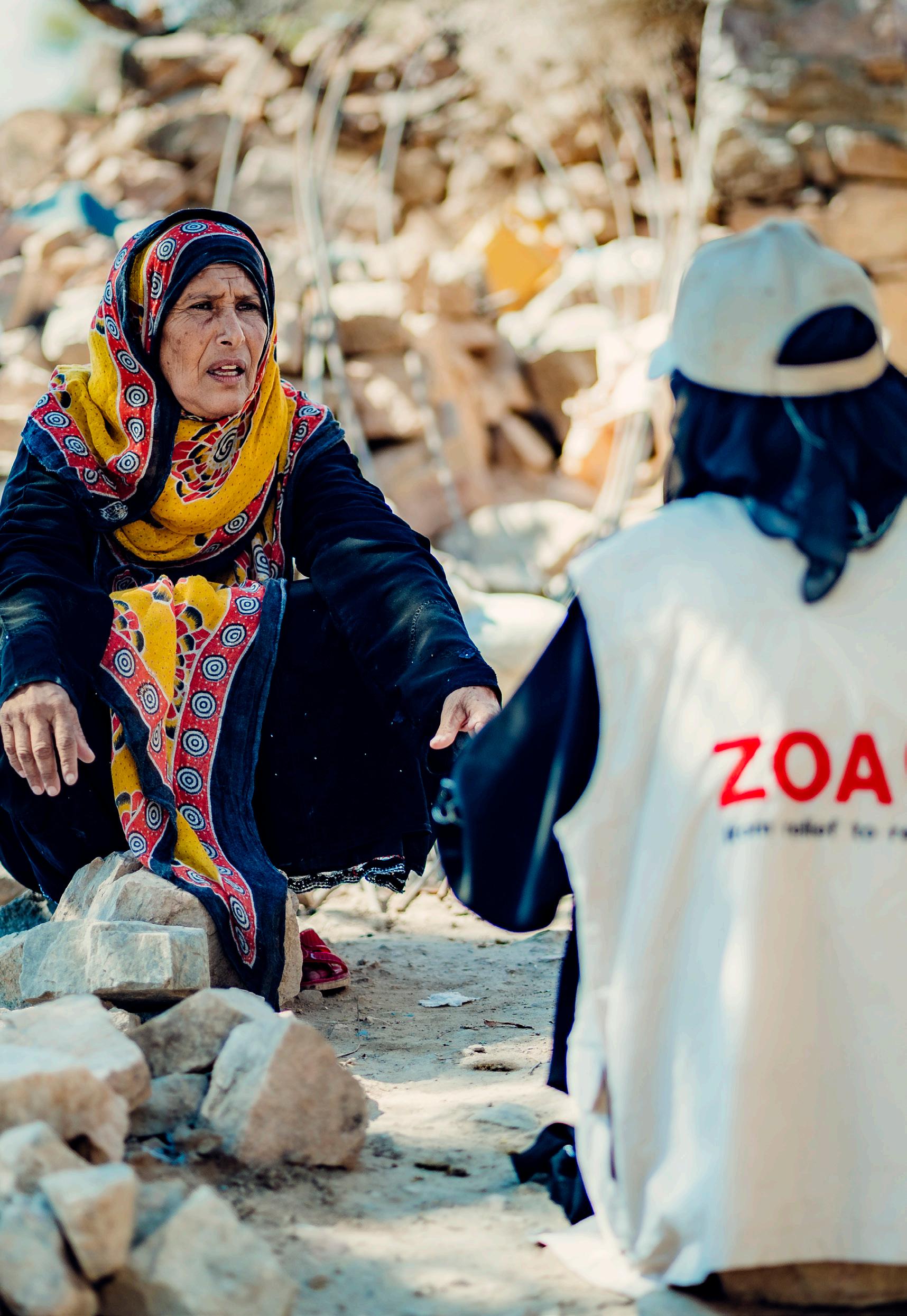
‘Gender, diversity and inclusion’ as a cross-cutting theme
ZOA will focus on one cross-cutting theme in this strategic plan period: Gender, Diversity and Inclusion (GDI).
As stated in our core values, one of ZOA’s core commitments is to treat people with respect and dignity irrespective of ethnicity, gender, religion, age or any other distinctive feature. In order to take this seriously in programming and in the internal organisation, we give specific attention to GDI.
GDI is related to each of the core programmatic themes. (Gender) Inequalities and marginalisation of specific groups often contribute to or are intensified by conflict. In order to let localisation be effective and sustainable, it is essential that the diversity of voices and needs are considered and represented. Finally, the effects of climate change often disproportionally impact women and marginalised groups.
GDI issues and dynamics will therefore receive specific attention in all projects, as we believe that an inclusive approach is of crucial importance for being effective, irrespective of the sector or type of work. We realise that the way this is practised and realised within our own organisation will set an example. Therefore, this will continue to be an important area of attention and further development for the internal organisation as well.
As part of GDI, specific attention will also be given to ‘persons with disabilities,’ which is a relatively new area of expertise for ZOA. In most countries where ZOA is involved, disability is often seen, though inclusion of persons with disabilities is a real challenge. We will seek active collaboration with partner organisations that have specific knowledge and expertise in this area.

The technical scope of our work continues to include the five sectors we have been involved in during the past years: Food Security and Livelihoods, WASH, Peacebuilding, Education and Shelter. We continue to focus on these five sectors as we want to maintain and further invest in high-quality standards of all our sectoral work and we are continuously seeking complementarity between sectors along the lines of our core programmatic themes.
The aim of our work in this sector is to create and sustain access to sufficient, safe and nutritious food and to enable vulnerable households to build sustainable livelihoods and realise economic stability. Particular attention is given to making use of approaches that prevent dependency on external support. ZOA has gained extensive experience in applying the PIP approach (‘Plan Intégré du Paysan’ or ‘Integrated Farm Plan’), an inclusive, bottom-up approach that engages people in environmental stewardship and sustainable change. Within the context of climate change, approaches for sustainable and efficient agriculture and food systems will be stimulated. At the same time, as more and more people (including displaced) are living in urban settings, there is a need to develop skills and expertise in urban FSL. Where necessary, ZOA will ensure that people have direct access to food and essential non-food items (NFIs), preferably through cash & voucher assistance (CVA) where assessed feasible, and alternatively through in-kind distributions.
Apart from ‘Peace Nexus’ being one of the core programmatic themes (see 4.1), ZOA also has defined Peacebuilding as one of its programme sectors. This includes general preparatory peacebuilding work focusing on the capacities for peace at individual, family and community levels as well as on structural conflict resolution mechanisms including local government and other stakeholders.
The aim is to promote social cohesion and trust and to strengthen communitybased security, conflict prevention and resolution mechanisms.
Apart from this, ZOA also aims to address specific types of conflict, including land and water conflicts and gender-based violence. ZOA recognises that if land tenure security is improved through inclusive land demarcation, land conflict resolution and land certification, and if water management is improved, then this will lead to more peaceful and stable communities. Furthermore, different user groups will have fair access to land and water. ZOA will usually start its peacebuilding work at the community level but may also get involved at the provincial level and national level, where appropriate, through lobby, advocacy and networking with other organisations.
ZOA’s WASH programmes focus on the availability and sustainable management of clean drinking water sources, access to adequate and equitable sanitation facilities and promotion of water and sanitation-related hygiene practises. Much of ZOA’s WASH activities in recovery settings take place at the community level; however, ZOA also includes more integrated approaches with a wider geographical scope, such as Integrated Water Resource Management (IWRM). This is a process involving different user groups within a catchment area, such as farmers and pastoralists, that promotes the coordinated development and management of water and related resources. In that way, economic and social welfare are promoted in an equitable manner without compromising environmental sustainability. In relief settings, ZOA can be directly involved in the provision of safe water, the construction of latrines and water points and the provision of hygienerelated items, preferably through cash & voucher assistance (CVA) where assessed feasible.
Within the field of education, ZOA’s involvement focuses on primary and lower secondary education. Education projects will go beyond the building or rehabilitation of school buildings and aim for relevant connections with the core programmatic themes, especially Peace Nexus and Climate Resilience.
This may include aspects such as training teachers how to integrate these themes into the curriculum. Peace education in schools can help children deal with a violent past or violent patterns in their current environment.
In ZOA’s Shelter programming, the main focus is on temporary and transitional shelter solutions. In emergency situations, acute shelter needs can be addressed by the provision of temporary shelters in the form of tents, tarpaulins, wooden structures or the upgrading of temporary facilities. Where possible, this is done through cash & voucher assistance (CVA). In recovery settings, there is often a need for transitional shelter that provides more protection. ZOA aims to provide transitional shelter that can be re-usable or expandable, thus providing the possibility for materials to be converted into permanent housing and to limit the environmental impact as much as possible. ZOA may assist in realising permanent shelter options through the renovation or rehabilitation of damaged houses based on the ‘building back better’ principle.
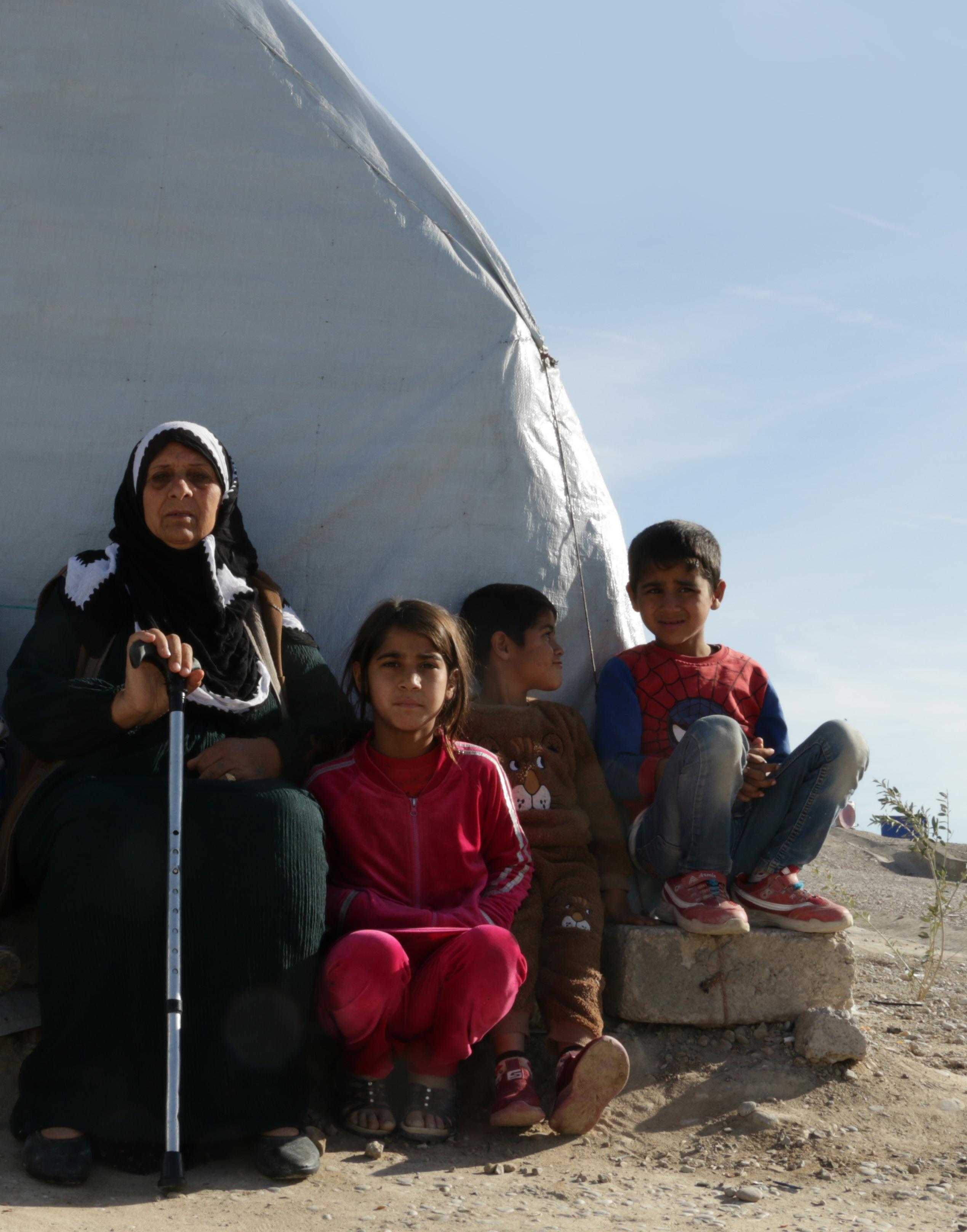
Across all themes and sectors, ZOA follows an approach that encompasses the following elements:
We involve communities in all stages of programming and acknowledge and support local capacity. We see local communities and their organisations as the prime stakeholders and owners of the change process. Consequently, we consider ourselves primarily accountable to them. Our ongoing commitment to the Core Humanitarian Standard (CHS) - which ZOA has been certified for since 2020 - helps us to give shape to this in all our processes.
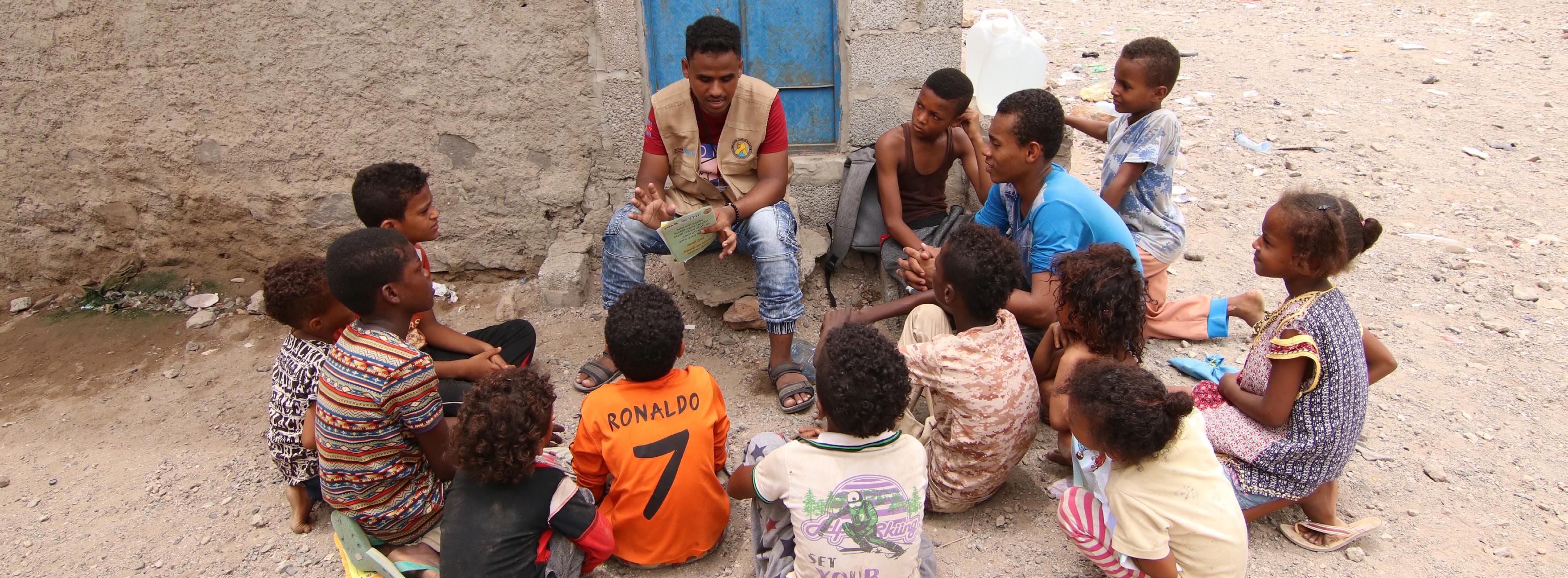
We optimally combine three intervention strategies in the way best fitting the nature and context of a particular programme:
--
Direct service delivery by ZOA and/or our local or international partners. In this, we increasingly make use of Cash & Voucher Assistance (CVA), as this often matches well with community ownership and with supporting local capacity.
Capacity enhancement of civil society organisations and other local actors.
Lobby & Advocacy for policies that serve the interests of communities and their organisations.
In our attempt to be effective and efficient, we seek innovative approaches and are engaged in a continuous process of learning and development. We therefore participate in relevant knowledge networks and collaborate with knowledge institutions.
As indicated in our Mission statement, ZOA has a dual mandate as it contributes to relief and recovery.
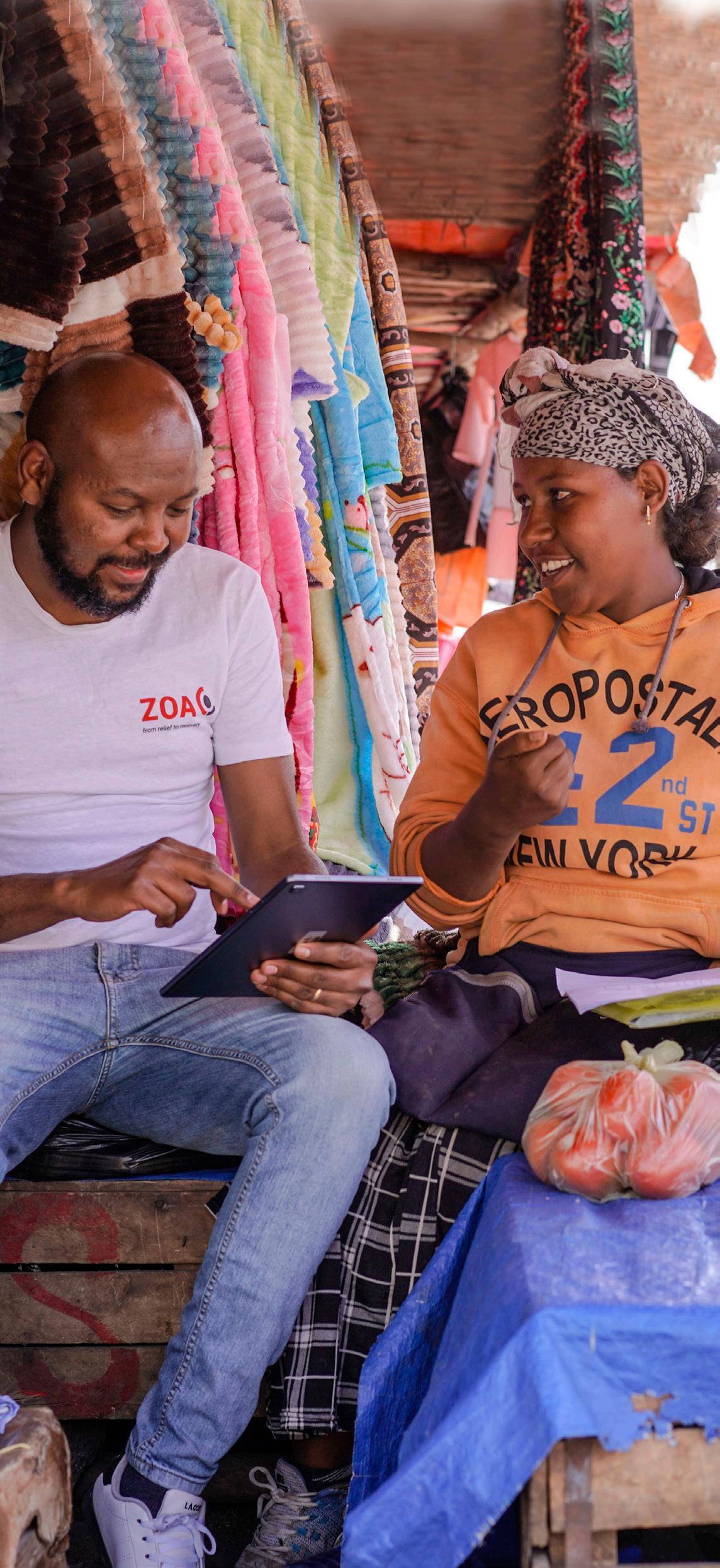
Given the increasing humanitarian needs in the world, ZOA will maintain and further strengthen its position as an effective and reliable implementing partner in relief. ZOA’s relief projects are implemented in response to conflict and/or natural disasters and aim to address short-term needs. We concentrate on the availability of food, clean water, essential non-food items, education and shelter, and - where relevant - prefer to work through cash & voucher assistance (CVA). In addition, we give attention to the psychosocial well-being of beneficiaries within our interventions, recognising that many suffer from traumas as a result of the conflict or disaster. Where possible, we contribute to improved protection and community relations.
outside existing country programmes), ZOA’s Disaster Response Team (DRT) normally takes the lead and is positioned to respond at short notice.
ZOA’s recovery programmes are planned and implemented in conflict-affected and fragile settings. Groups targeted include all conflict-affected communities among which are refugees, IDPs, returnees and host communities.
In accordance with our choice for Peace Nexus (see 4.1), we will operate in a conflict-sensitive way in relief projects and at the very least prevent doing harm. Likewise, our choice for localisation stimulates and guides us to make optimal use of the available capacity of local actors in relief projects and to adopt a longer-term perspective as soon as this is possible.
In addition to addressing short-term needs, ZOA’s recovery efforts endeavour to initiate and encourage processes of structural change following the integrated approach described above (see 4.1). In doing so, our overall focus is on strengthening local capacity and leadership and on promoting participation, ownership and inclusion. We believe these are essential elements for preventing conflict and promoting peace and for effectively dealing with risks and shocks.
As ZOA’s mandate covers relief and recovery, we realise our presence and involvement will always have a temporary character, although the period of involvement in recovery programmes in a country usually spans 10-15 years or longer.
Many of the countries in which ZOA operates are characterised by protracted crises. Thus, both relief and recovery projects are often implemented simultaneously in the majority of ZOA’s country programmes. For any new relief intervention (i.e.
In developing and maintaining a country strategy, we give specific attention to the process of phasing out in order to set concrete goals for working towards a situation whereby local organisations are in the lead and ZOA’s role and contribution can be phased out.
In order to be successful in implementing the programme strategy and specific programmatic priorities described in chapter 4, we have identified some organisational areas that will receive particular attention in this strategic plan period. We see the further development of and attention to these aspects as preconditional for the successful implementation of the strategic choices.
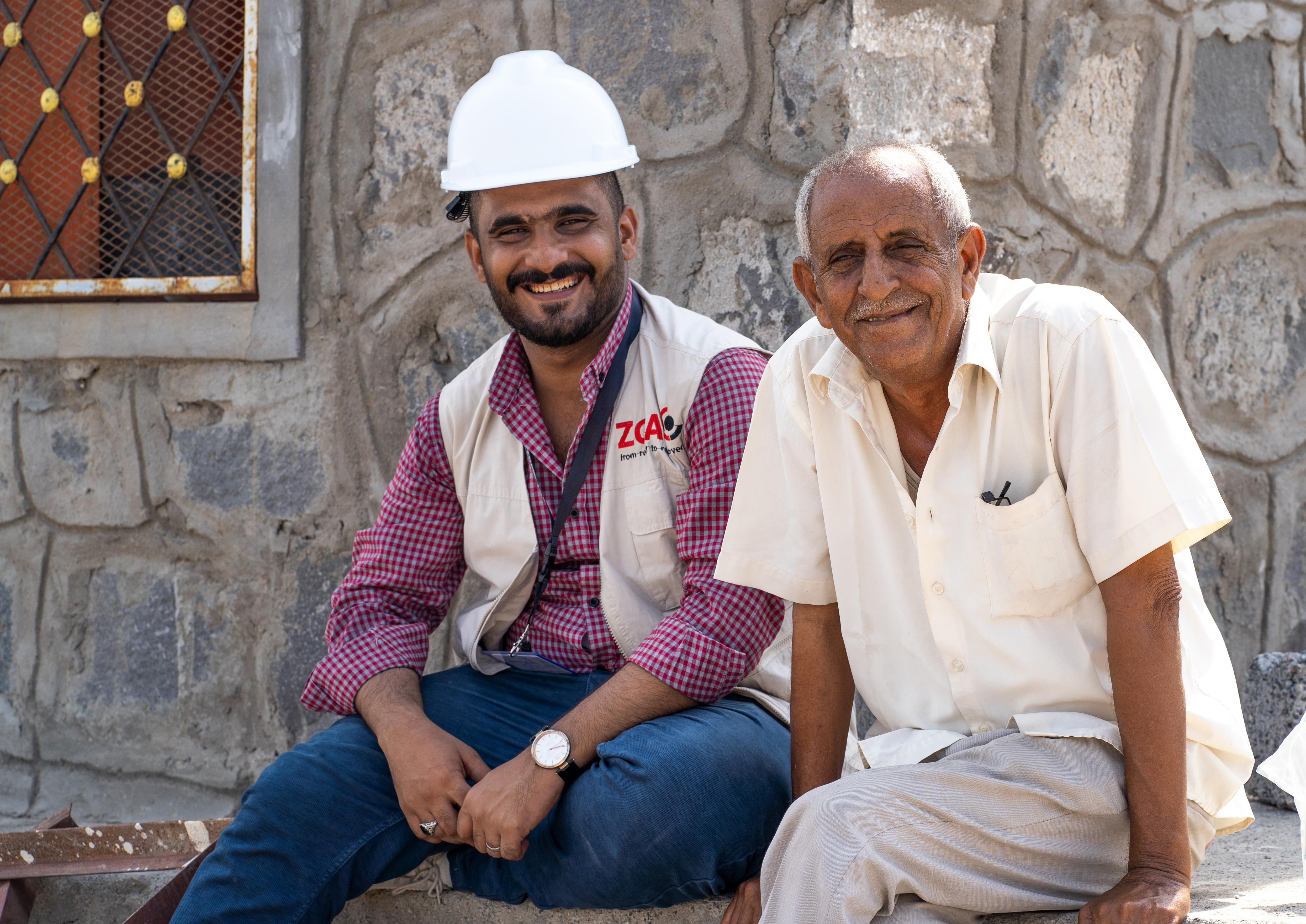
In line with our core value that ‘we value people,’ we want to further strengthen our focus on the human side of our work. We recognise that people are the drivers of our organisation, values and mission. We care deeply about our staff as individuals and want to be recognised for an environment and leadership culture that is capable of entering relationships of reciprocity.
Leadership development and succession planning will receive additional attention. ‘Internal breed’ will increasingly contribute to filling senior staff positions.
Driven by inspiration, not only goals, and by impact, not just financial results, we aim to strengthen the principle that people are the purpose of our work. An internal emphasis on people orientation is expected to reflect positively on the external programmatic side of ZOA’s work.
As we consider staff to be our main asset, continuous investment in Human Resource Management (HRM) has always been of crucial importance. We realise that the combination of programmatic choices made in this strategic plan is an additional reason for making HRM a priority area of attention and further development. The programmatic choices made will require additional knowledge and experience (technical capacity but also soft skills) in country teams and at HQ in order to be able to successfully implement this strategic direction. Moreover, in several countries the portfolio and organisation have shown significant growth in the past few years, while HRM capacity did not develop accordingly. In order to restore balance, additional investments need to be made in HRM capacity and systems.
Given the trends in institutional funding (see 3.2) and partnering (see 3.3), ZOA believes that working in consortia continues to be the way forward for maintaining a viable and relevant position as an INGO. Based on our experience in leading consortia in past years, we will increasingly aim for a leading role for ZOA in managing and coordinating consortia. We will also invest in the further development of related policies, risk mitigation strategies, procedures and systems. Thus, we will continue positioning ourselves as an organisation that is able to manage large funding contracts implemented through consortia.
To give shape to this commitment, we will further develop the basis of our HR function by ensuring sufficient resources and staff are available at the country and HQ level. We aim to build HR capacity close to where our staff is. Another part of strengthening the HR foundation is an investment (partly temporarily) in the use of technology, a review and improvement of processes and the adoption of quantifiable metrics and HR data.
Following a strengthened HRM basic function, we will further work on ‘ZOA’s way of working’ in the people domain. This includes, among other things, holistic staff support, a healthy work-life balance and curative as well as preventative staff care measures. Learning and development of capacity are encouraged and actively supported, making optimal use of appropriate E-learning tools and platforms. We recognize the crucial role of line managers at all levels in the organisation as people managers, value ambassadors and main builders of human capability.
ZOA aims for developing consortia comprising INGOs like ZOA as well as local partner organisations. The latter will also provide excellent opportunities for actively involving local partners in developing donor relations and in joint programming, proposal development and implementation.
Being a constituency-based civil society organisation, maintaining and further developing the connection with our Dutch constituency continues to be of strategic importance. Our legitimacy as an organisation is largely based on our representation of that constituency.
Strengthening the relationship with our constituency should result in increased ‘visibility’ of ZOA as the largest Christian organisation for relief and recovery in the Netherlands. Continuous and coordinated investment in fundraising, communication, lobby and advocacy and awareness raising will contribute to further strengthening ZOA’s visibility position.
It should also result in creating more awareness among our constituency about fragility, conflict and climate change as drivers of humanitarian need in the type of contexts ZOA operates within. Increased awareness and commitment to change among our constituency will feed the legitimacy of ZOA’s efforts to advocate for improved conditions for the communities we work with. Funding our ambitions requires sustainable growth and flexibility in funding. Therefore, strengthening the connection with our constituency should also result in further growth of private funding. Growth of unlabelled private funding will especially enable us to respond to the biggest needs.
In order to be successful in all of this, we will strengthen the connection between the communities served in country programmes and the individuals and groups in the Netherlands comprising ZOA’s constituency. The ambition to grow our constituency’s support requires increased focus and commitment throughout the organisation, in order to serve our Dutch constituency and involve them in ZOA’s mission.
In the past few years, ZOA has invested in the development and implementation of systems used for managing and facilitating key processes, including: ZOA Manager used for project cycle management
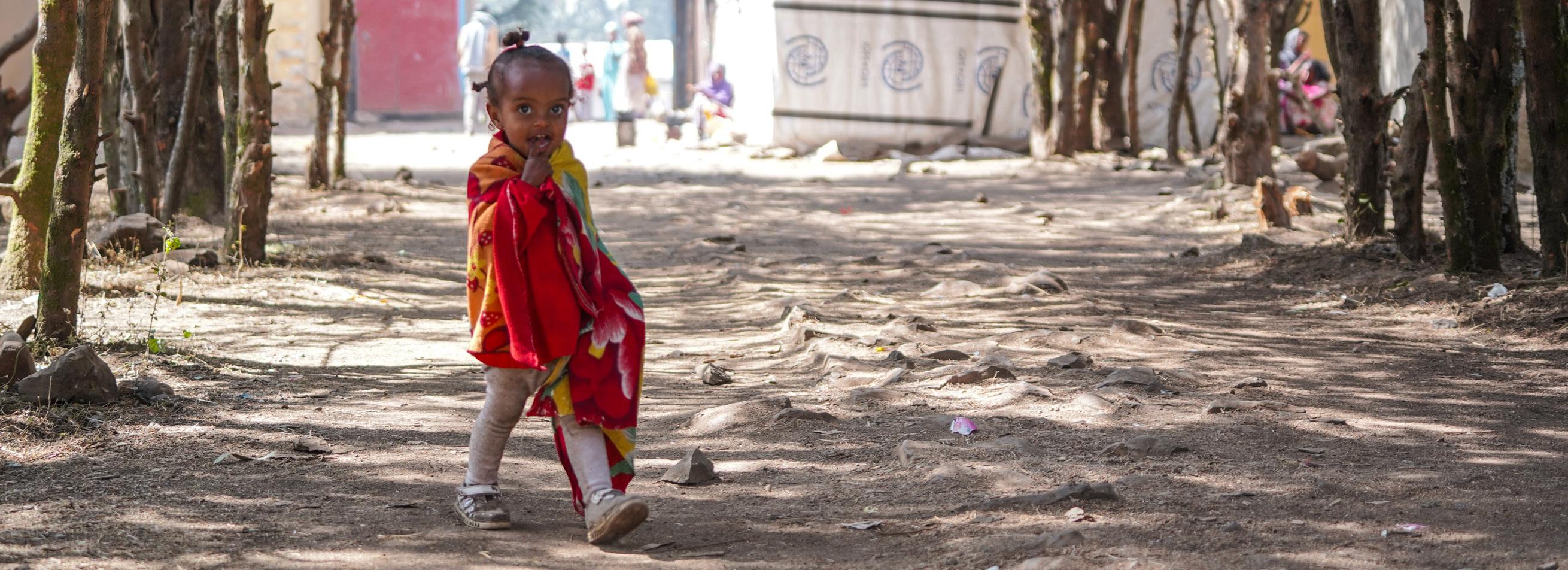
Enterprise Resource Planning (ERP) used for financial management, procurement and HR administration
After this period of introducing new systems, we will focus on their improved application in the new strategic period, apart from some necessary fine-tuning in the configuration of systems. This includes further development and use of the underlying IT infrastructure. Better use of systems should help in making optimal use of available information for management decisions, learning and internal and external accountability.
As ZOA wants to monitor and learn from the implementation of this plan, the strategic choices made will be accommodated in the system for Monitoring, Evaluation, Accountability and Learning (MEAL).

(Monitoring, Evaluation, Accountability and Learning) is programme level. Overall, objectives and corresponding
information across projects.
Finally, ZOA aims to strengthen its MEAL system and practices to optimally serve learning and innovation. Given the fluid contexts and multi-faceted nature of crises, continuous learning and innovation form an important basis for regular modification and adaptation of strategies. Apart from techniques and approaches, this requires feeding and promoting an enabling internal environment for learning and innovation.
In terms of methods and approaches followed, we will broaden our approach to monitoring and evaluation. Complementary to quantitative methods, based on collecting and analysing data that are predominantly quantitative by nature, we will make better use of qualitative techniques, such as ‘most significant change’ and ‘storytelling.’ We expect this combination of methods will provide a richer picture of programme effectiveness and better serve the information needs of different stakeholders.
Sustainable Development Goals (SDGs)
ZOA’s constituency. Good MEAL practices at the project level are crucial for project reporting and project-related
The UN Sustainable Development Goals set an agenda for peace and prosperity for people and the planet by 2030. Many of ZOA’s programmes contribute to the SDGs11 in a variety of ways. ZOA will seek to demonstrate how it contributes to the SDGs by connecting to ZOA’s core programmatic indicators.
11 This specifically applies to the SDGs 1 (no poverty), 2 (zero hunger), 4 (quality education), 5 (gender equality), 6 (water and sanitation), 10 (reduced inequality), 13 (climate action) and 16 (peace, justice, institutions).

Chris Lukkien - Chief Executive Officer
Edwin Visser - Chief Programme Officer
Leo den Besten
Felicia Morgenstern
Photography
Lieuwe Siebe de Jong
Peter Caton
Jilke Tanis
Jonneke Oskam Living Image
Karam Alshamali
Alycke de Haan-Slomp
Design
Buitengewoon Concept
ZOA
Sleutelbloemstraat 45, Apeldoorn
P.O. Box 4130, 7320 AC Apeldoorn

The Netherlands Chamber of Commerce registration number: 41009723 T +31 (0)55 36 63 339 E info@zoa.ngo


Copyright © 2022 ZOA
The information in this document may be reproduced (excluding the photos), provided ZOA is notified and this Strategic Plan is acknowledged as the source. ZOA would like to receive a copy of the publication.